Have you ever wondered whether you’re allowed to use your initials as a signature? Is it considered legally binding? Don’t worry; this article will answer all your questions. We’ll cover the following:
- Can your signature be your initials?
- The main difference between signing with your initials vs your full name
- How to create an electronic signature
- How to initial a document electronically
- Frequently asked questions
Let’s get started.
Can Your Signature Be Your Initials?
Yes, your signature can be your initials considering that many people use their initials as their signature. Using initials can be easier and saves time for those with names that are long and difficult to write. Legally speaking, there’s no requirement for what a signature has to look like; you’re free to use what you wish.
However, there are several considerations to keep in mind if you intend to use your initials. For starters, ensure it’s legible; if it’s hard to read, it might not be considered a legitimate legally binding signature.
Secondly, try to be consistent and use the same initials each time you sign something. Using different initials on each new document will make it difficult to prove that it was you who made the signature.
There’s genuinely no issue with using your initials for your signature. Just ensure that it can be read and that you use it frequently. Consult with an attorney if you have any concerns regarding legally-binding signatures.
The Main Difference Between Signing With Initials vs Your Full Name
Before we detail the difference between signing with initials and your full name, let’s first define a signature.
A signature represents your name and acknowledges that you’ve signed a document. It’s accepted evidence stating you knowingly agreed to something. It’s a mark or symbol, typically handwritten with a pen or pencil, but can also be stamped. You can also create your signature digitally; we’ll discuss that in more detail below.
You can sign a document in two general ways: with your initials or full name. Both have pros and cons; the best way to sign a document varies depending on the situation.
Signing with your initials is quick, easy to write, and saves space. It can be used on documents that don’t require a legal signature, like emails and letters. However, some people might not consider it a valid signature.
Using your full name as a signature is more secure than signing documents with your initials. It’s considered more legitimate and, therefore, can be used as a legally binding signature, making it ideal for legal contracts and agreements. The downsides are negligible: harder to read, takes longer to write, and occupies more space on the page.
There are several instances when using your initials as your signature makes sense. Some examples include:
- When signing non-legal documents
- When you want to save time
- When signing personal documents, like to-do lists and grocery lists
On the other hand, here’s when you’ll want to consider using your full name instead:
- When signing legal documents
- When signing important documents like your driver’s license, passport, job applications, or a letter of recommendation
You must use the correct signature for the document that you’re signing. If you sign a legally binding contract with your initials, other contract parties could argue it isn’t legitimate.
Make sure you use the right type of signature for the document you’re signing; otherwise, there could be legal consequences. For instance, using your initials could nullify your signed contract.
How to Create an Electronic Signature
As mentioned earlier, it’s possible to sign a document online. An e-signature (electronic signature) is a legally binding signature that has been created online. It’s effectively a digital version of your “wet” or paper signature.
Electronic signatures provide numerous benefits over regular handwritten or stamped signatures. It’s more convenient; you can sign a document anytime, anywhere. It’s also more secure and speeds up the entire process of signing.
There are several ways to create an e-signature; some of these methods include:
- Drawing your signature with a mouse or stylus
- Uploading a scanned or photographed image of your signature
- Using a signature pad device
- Using a digital signature tool/electronic signature app
Using a digital signature tool is the simplest and most effective of the four options. Several great options are on the market today; the best is Signaturely.
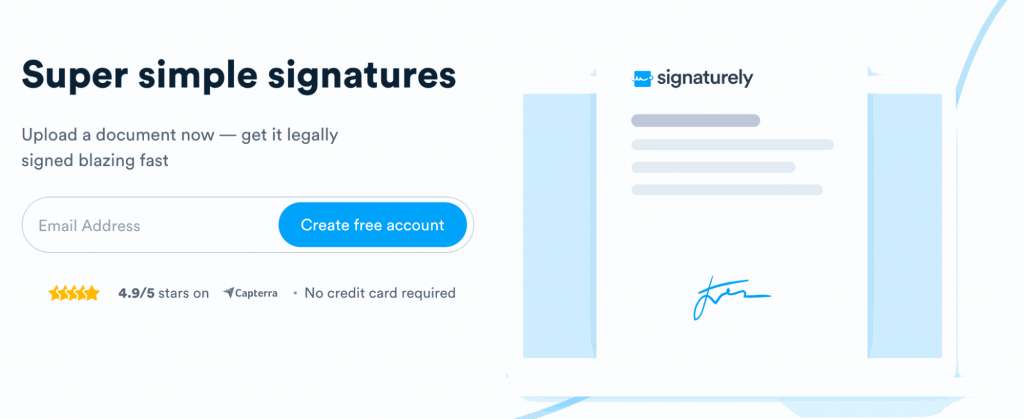
Signaturely is a cloud-based digital signature tool that allows you to sign documents electronically. With this tool, you can create a legally binding digital signature and add it to your contracts, forms, and agreements.
If you want to create an electronic signature and use it with Signaturely, start by creating a free account.
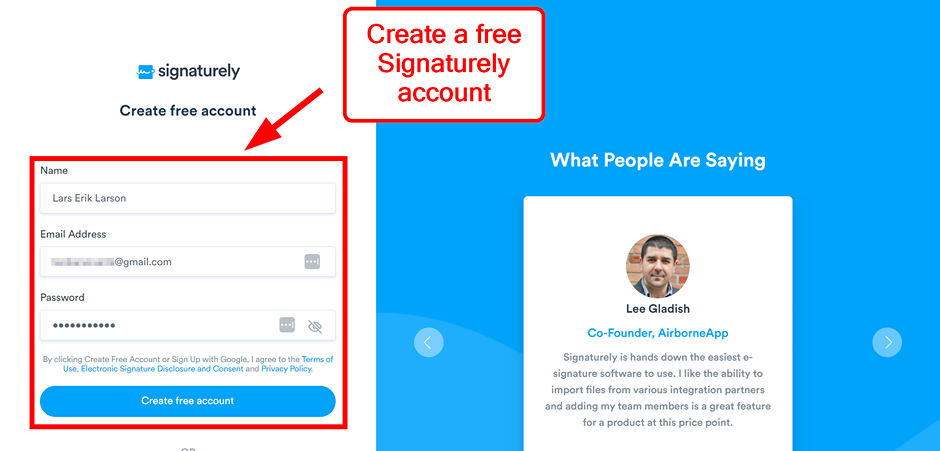
Once you’ve done that, log in to your Signaturely account. When the page has loaded, select Settings and Edit Signature on the sidebar to the left.
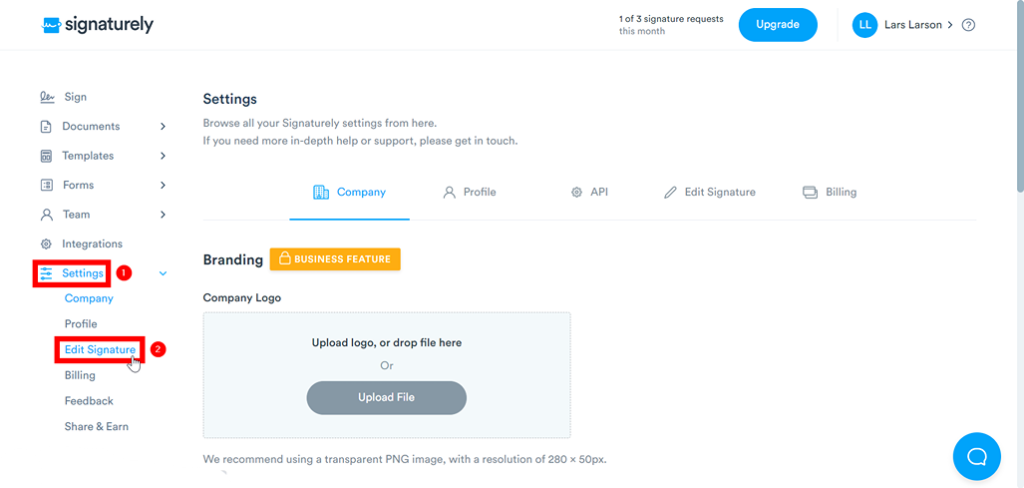
Once on that page, select the Create Signature button to make your electronic signature. An interface with several options will come up, and it’ll give you the option to type, draw, or upload an image of your signature. Select the one that best fits your needs.
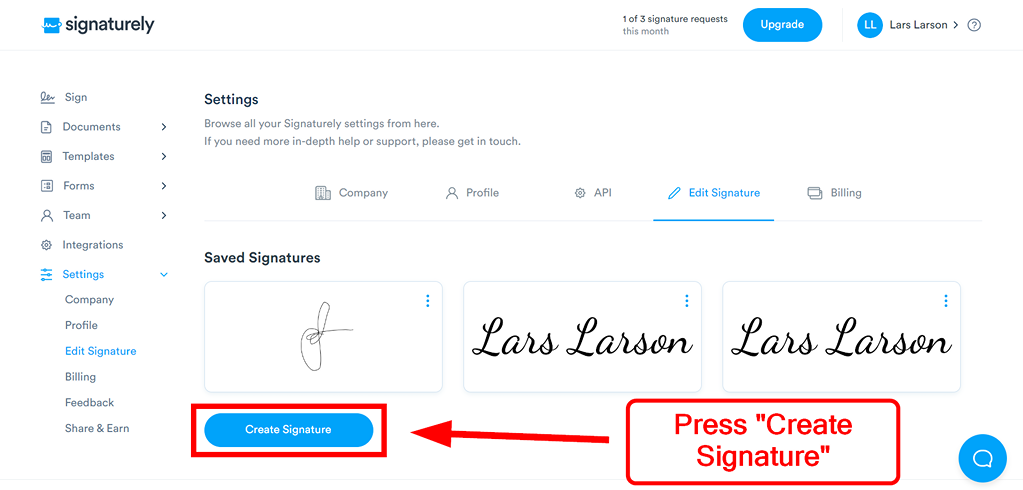
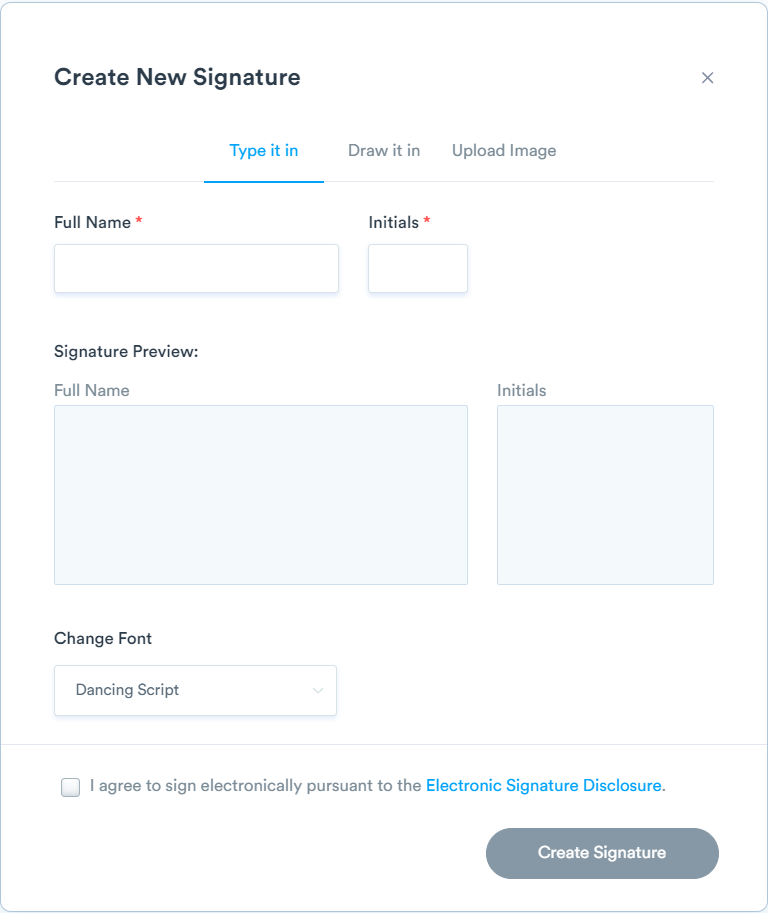
With your electronic signature now created, you can use it on documents you need to sign. If you want to sign a document online with Signaturely, press Sign on the left-hand sidebar and use the File Uploader interface by selecting Upload File. Once the document has completed loading and been attached, hit the Sign the document button.
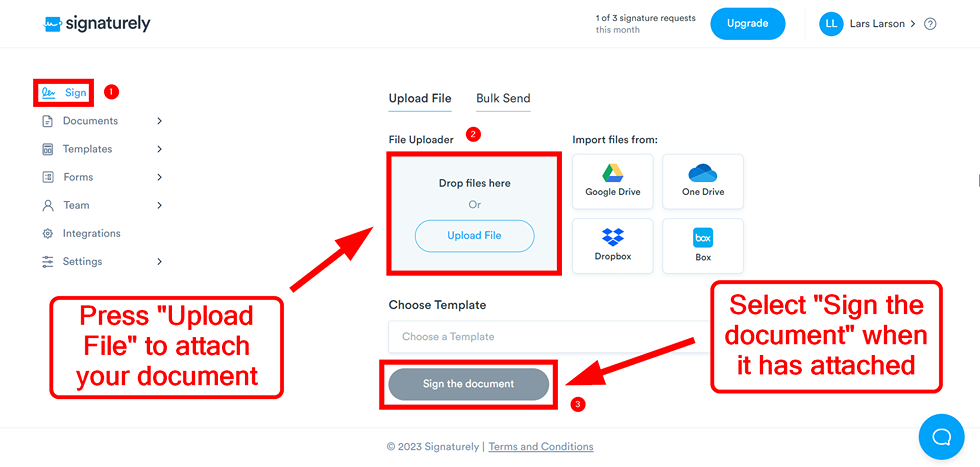
Doing that will send you to the document editor. You’ll need to select a signing option before you can add your electronic signature to the document. There are three to choose from: Sign a Document, Sign & Send for Signature, and Send for Signature.
Sign a Document is for documents that only require your signature. Sign & Send for Signature is for documents that require your signature and others. Send for Signature is for documents that only need a signature or signatures from others. Select the option that’s right for your document, then press Continue.
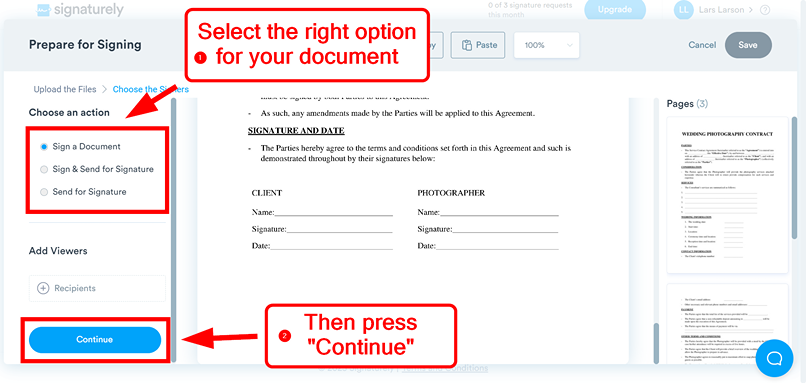
You can now add your newly created electronic signature to your document. There’ll be a left-hand sidebar titled Fields. Underneath it are several form field options, including Sign and Initial options. Use either of them to add your electronic signature to the document. Don’t forget to add other form fields, like dates, text boxes, and checkboxes.
Once you’re done, press Save in the top right corner.
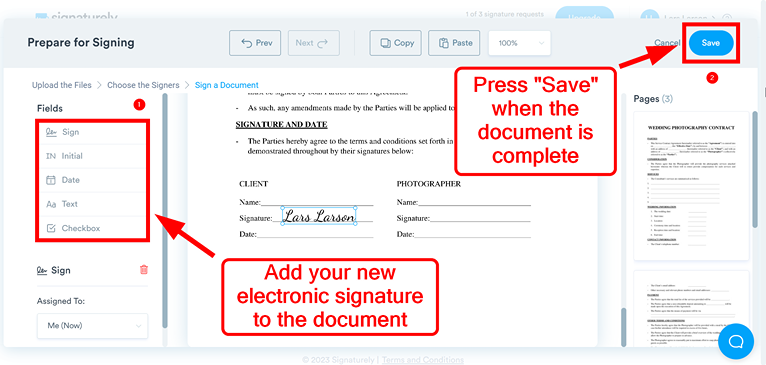
You’ll be sent to one more page. Press the Sign a Document button to finish the signing process. You’ll then receive a confirmation and be able to download your electronically signed document.
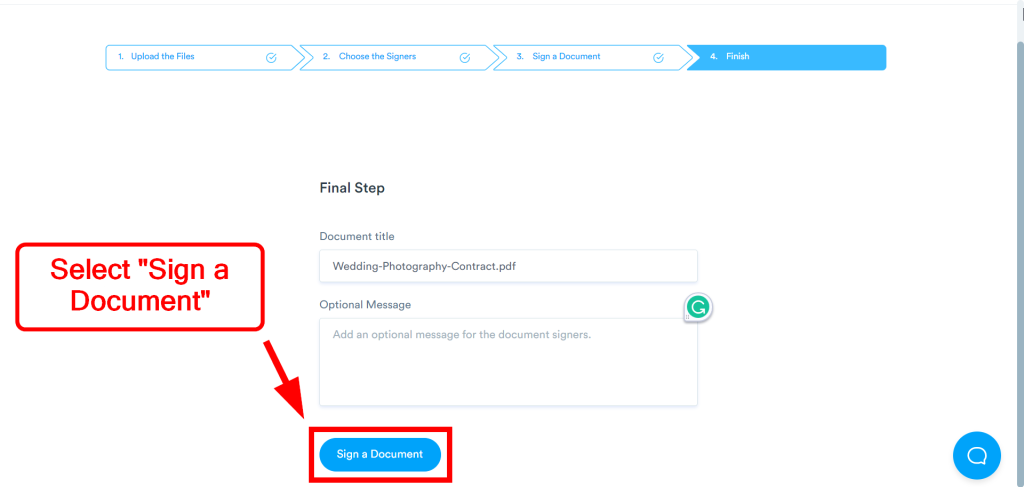
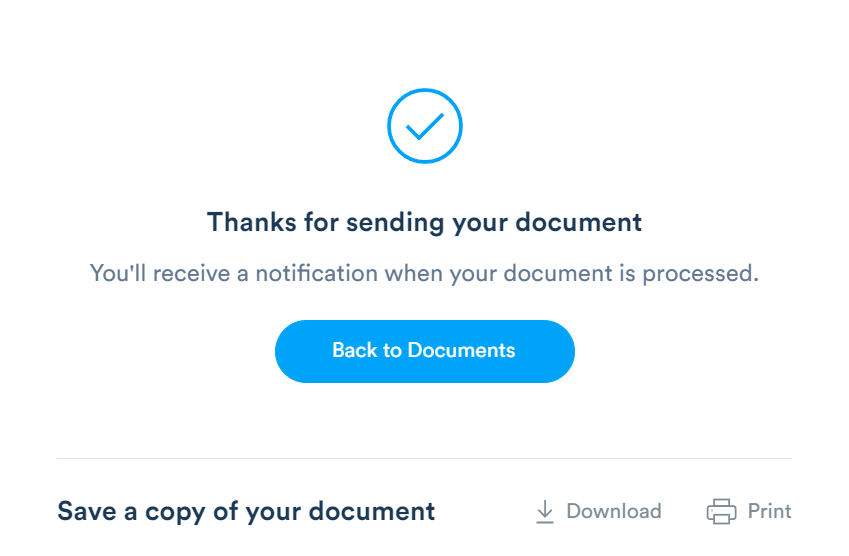
That’s all there is to it. Signing documents online saves time, effort, and even money. Consider using Signaturely to simplify and streamline your document signing process.
How to Initial a Document Electronically
The easiest and best way to initial a document electronically is to use digital signature software like Signaturely.

Signaturely is a digital signature tool allowing you to sign documents safely and securely online. The cloud-based platform enables you to create a digital signature, a more secure alternative to an e-signature.
To initial a document electronically with Signaturely, go to the website and register a free account.

Once you’ve made your account, log in and upload the document you want to sign with your initials. There should be a File Uploader interface with an Upload File button. Once you’ve attached the file, press Sign the document.
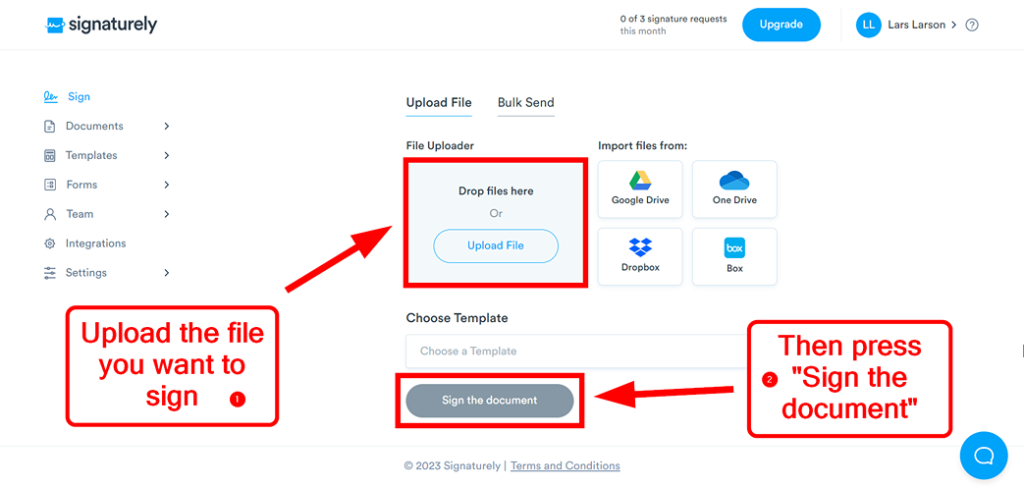
You’ll be sent to a document preparation page; here, you’ll need to select the suitable signing options. There are three to choose from: Sign a Document, Sign & Send for Signature, and Send for Signature.
It’s self-explanatory: select Sign a Document if you only need to sign yourself. If you need your signature plus signatures from others, choose Sign & Send for Signature. If you only need a signature or signatures from others, select Send for Signature.

You’ll now be able to sign the document with your initials. There will be a sidebar on the left titled ‘Fields’. You’ll see the Initial option; select it, then add your signature. It can be either typed, drawn, or uploaded. Don’t forget to add any text, date, or checkboxes. When you’re done, press Save in the top right corner.
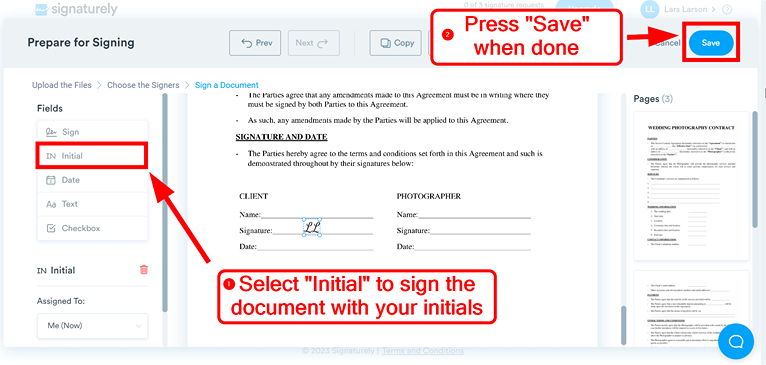
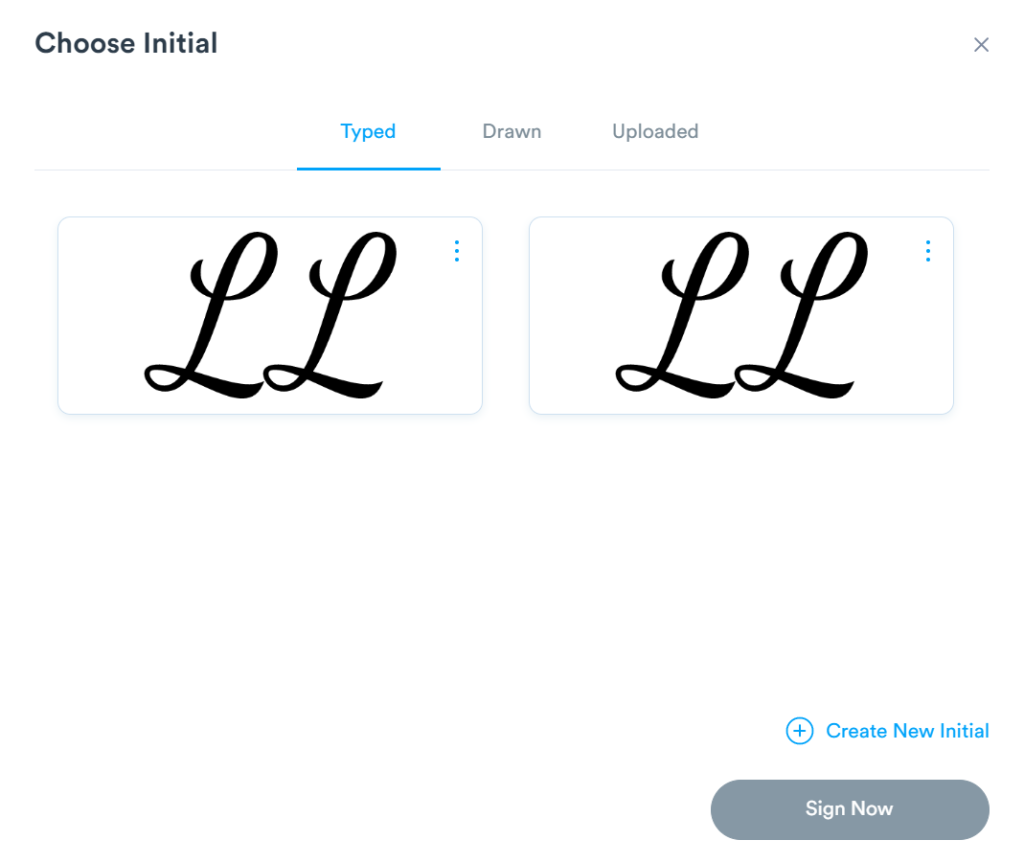
You’ll then be taken to the final page. All you have to do here is select Sign a Document, and you’ll be done. Your initialized document will be complete, and you can download it.


Signing documents online is easy, secure, quick, and legal. Save yourself the hassle and use Signaturely to speed up your document signing process.
FAQs
No, initials aren’t the same as a signature. A signature is a representation of your name; it acknowledges that you’ve agreed to the stipulations of a document. It’s an accepted piece of evidence and can be handwritten, stamped, or digitally created.
Yes, your initials in cursive can be used as your signature. There are lots of people with complicated or long names who do this. There are no legal guidelines that dictate what your signature must look like. If you want to write your signature in cursive, go ahead. Just make sure it’s legible and use it consistently.
Yes, your signature can be your first initial and last name. You’ll find that lots of people already do this because of long or excessively complicated names. Legally speaking, no guidelines state what your signature has to look like. Just make sure that it’s easy to use and that you use it consistently. Consult with an attorney if you have any concerns regarding legality.
Yes, anything can be your signature. Legally speaking, there are no specific guidelines for what your signature needs to look like. Your signature can take on whatever form you prefer. Just make sure it’s legible and you use it consistently each time you sign a document.
What You Need to Remember About Signing With Your Initials
It’s completely acceptable to use your initials for your signature. However, in some cases, it might not be deemed legally binding. Using your full name might be a better choice for legal documents.
Several factors should be considered when selecting a signature. You must ensure your signature is easily read and consistently used across all documents you’ve signed.
